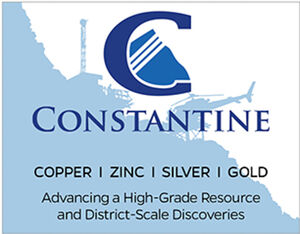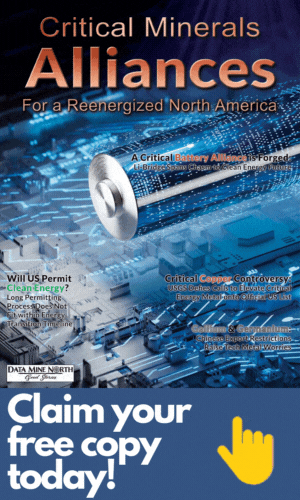SCOTUS agrees to hear Sturgeon access question
Despite compromises, an endless war with the U. S. Department of the Interior over who sets the rules about land use drags on
Last updated 10/18/2015 at Noon
Although not strictly a mining case, John Sturgeon's challenge to the National Park Service's regulation banning private hovercraft on the rivers in the Yukon-Charley Preserve goes to the heart of the perpetual question Alaskans have concerning access across federal lands.
On Oct. 1, the Supreme Court of the United States granted Sturgeon's petition for certiorari.
The grant of "cert" is noteworthy in and of itself because the high court grants certiorari to only a small fraction of those who seek it and, generally, it is reserved for questions the court deems important.
The traditional route to the Supreme Court is the result of a split in the circuits, where one or more Circuit Court of Appeals resolve a broad question of law one way, while other circuits courts resolve a similar question differently.
In Sturgeon's case, there is no split in the circuits because, superficially, it is an Alaska-specific case; however, clearly the high court feels that it raises an important question of law.
Sturgeon, you will recall, annually went moose hunting on his private hovercraft in the Yukon-Charley Preserve. The waters he transited had been held navigable; and, therefore, the submerged land belonged to the State of Alaska. Until 1996, the Park Service did not attempt to regulate such watercraft on the river. In 1996, however, the Park Service promulgated a nationwide regulation purporting, among other things, to prohibit hovercraft. Sturgeon, while on a hunting trip, stopped on a sandbar to do some maintenance, was given a warning about the regulation and was told to remove his hovercraft from the Preserve.
Sturgeon attempted to work with the Park Service to get the regulation changed and was joined by the State of Alaska, which was interested because the regulation also banned the use of helicopters in Park Service units.
Ultimately, Sturgeon took the case to the federal district court and lost, Senior Judge Russel Holland ruling that the language of Alaska National Interest Land Claims Act section 103(c) permitted the Park Service to apply and enforce rules governing navigable waters, as long as they did not apply "solely" to ANILCA withdrawals.
Holland further held that the courts must defer to the agency's interpretation of its own mandate under the rule in the Chevron case.
On appeal to the Ninth Circuit, Holland's decision was unanimously affirmed.
Sturgeon is to be applauded for his tenacity in this matter, because regardless of the outcome, he has correctly pursued his perceived right over every barrier that has been placed before him. Whether his diligence is rewarded will remain to be seen; however, many of us will keep our fingers hopefully crossed.
Traditionally, the rivers of Alaska have been the transportation corridors that allow access to remote areas throughout the state. The nature and size of the vessel has never been a significant issue. Where, as here, the conveyance of the submerged land preceded the creation of the Park Service unit, it is an obvious question as to whether the rivers are actually even in the unit. There are innumerable examples in the Lower 48 where federal lands are bisected by tribal, state or private holdings, and the transection divides the federal unit into separate parcels. Presumably, that should be the case here as well. The Park Service jurisdiction should reasonably end at the water's edge.
This is not to suggest that there are not laws of general application that reach to the waters of the United States, such as the Clean Water Act; however, such laws are different in kind. We generally look on these rules as an exercise of national police powers.
The Park Service, for better or worse, has not been granted police powers beyond the borders of its land holdings. The agency may wish it otherwise, but so far it is compelled to stay in its own backyard. If they are afforded the power to regulate activities outside of Park Service units, there will be no end to their appetite.
According to a recent article in the Onion, for example, the Department of the Interior is adding 600,000 acres of land to the National Forbidden Zone. The article notes that "Secretary (Sally) Jewell expressed her hope for an increase in her department's budget next year, saying the added land would require additional fencing, barricades, and a staff of soothsayers to ward off any potential visitors."
Every action by the Park Service that restricts activities in Alaska diminishes us all. ANILCA was intended to be a great compromise, and the many provisions in the act intended to make it minimally palatable to Alaskans included the language of Section 103(c). The arguments before the Supreme Court will focus on how the first sentence and the second sentence of that section are to be read together.
Section 103(c) is not long. It says "[o]nly those lands within the boundaries of any conservation system unit which are public lands shall be deemed to be included as a portion of such unit. No lands which are conveyed to the State shall be subject to the regulations applicable solely to public lands within such units. " It is a miserly reading of that language to conclude that the word "solely" in this context renders state lands subject to Park Service jurisdiction. It is, likewise, an ongoing disappointment that the courts feel obliged to stand by and let that happen.
Although the Sturgeon case does not strictly raise a mining issue, miners across the state will watch with interest whether the Supreme Court elects to put the brakes on Park Service ambitions.













Reader Comments(0)